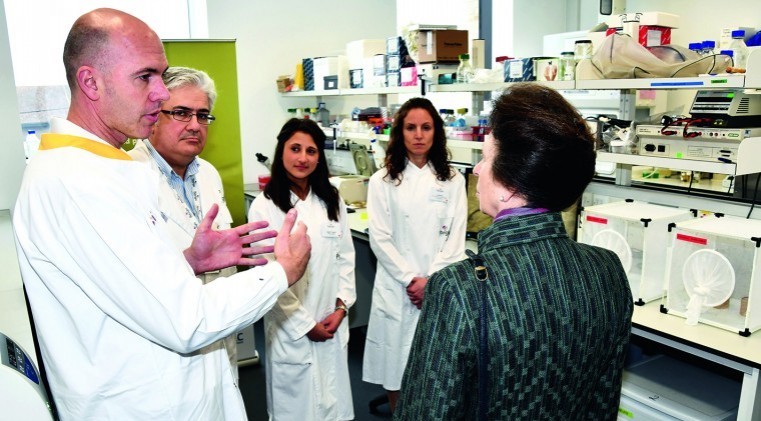The Biotechnology and Biological Sciences Research Council (BBSRC) centre in the Jenner building accommodates 100 scientists working on new vaccines for livestock diseases, including those that can spread to humans. Scientists at the facility mainly focus on poultry diseases such as avian influenza (bird flu) and Marek’s disease, but they also develop vaccines for other animal viruses such as the devastating African horse sickness virus (AHSV).
The centre cost £24 million, which came from a £350 million strategic capital investment from government through BBSRC. Recent breakthroughs at Pirbright include using new technologies for developing a new generation of genetically modified (GM) vaccines. These are quicker and cheaper to produce and are capable of protecting against a variety of diseases – paving the way for universal vaccines against several different strains of virus such as avian influenza.
Pirbright is a world leader in the development of new vaccines and diagnostics and provides national surveillance and response in the UK for a range of dangerous livestock virus diseases and those that spread from animals to humans. Pirbright is home to the world reference laboratory for foot and mouth disease and UK/Europoean Union reference laboratory for bluetongue disease.
Architects NBBJ and the construction company John Sisk & Sons have created an energy-efficient building. The centre consumes 20% less energy than the buildings it replaces. This was achieved by including features such as automated façade vents for night-time cooling, rainwater harvesting, extensive use of LED lights, and 283 photovoltaic panels on the roof. Subsequently, the building was rated as excellent by BREEAM (Building Research Establishment Environmental Assessment Method), a sustainability assessment.
Pictured: › Dr Simon Carpenter, head of entomology at The Pirbright Institute, explains to HRH The Princess Royal how their research helps policy makers and farmers predict and control outbreaks of livestock disease transmitted by insects such as biting midges. Photo: The Pirbright Institute ©2017




